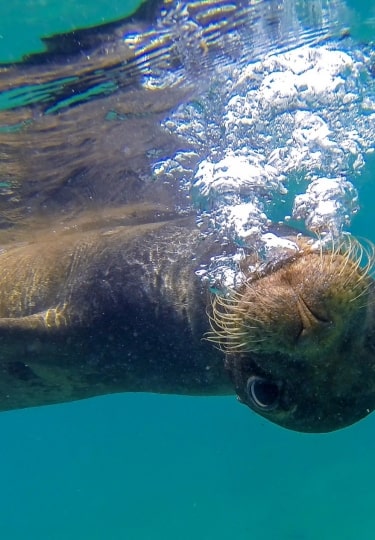Snorkeling in the Galapagos opens your eyes to the wonders of the underwater world. Life is so abundant here that every trip into the water is an adventure. Penguins may pop up next to you. Playful sea lions zoom around you, while sea turtles glide gracefully through the blue.
Some snorkel trips take place from the beach—and the beaches themselves are dazzling, in shades of white, volcanic black, or glittering green. Or you could be jumping into deep water off a “panga”, the inflatable boats used all over the islands.
Like the land animals in the Galapagos Islands, aquatic species have no fear of humans. So while you’re expected to keep your distance from wildlife, you’ll find you can get close enough to capture amazing underwater shots, or simply feast your eyes on creatures unlike any you’ve seen before.
Here are 11 of the best spots to go snorkeling in the Galapagos.
Punta Vicente Roca, Isabela
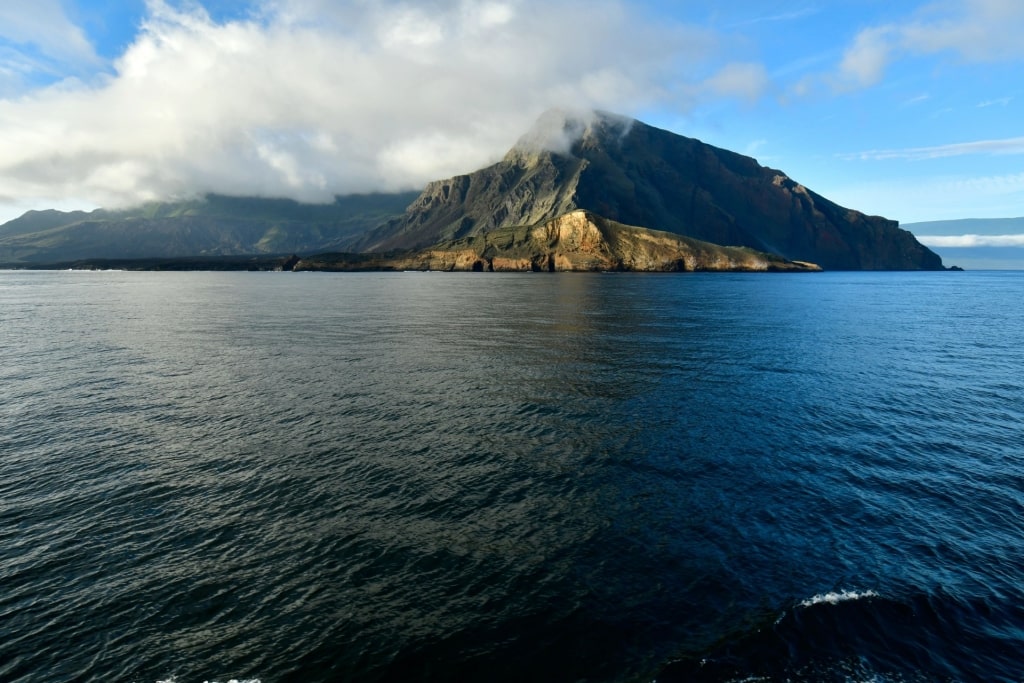
Punta Vicente Roca, Isabela
Punta Vicente Roca, off Isabela Island, is one of the most popular spots for snorkeling in the Galapagos thanks to the proliferation of sea turtles here. It’s not unusual to see several turtles together, basking in the sun on the surface of the water.
Snorkeling at Punta Vicente Roca is straight off a panga, so you’ll need to be confident swimming out of your depth. As well as turtles, look out for rays shimmying across the sandy sea bed.
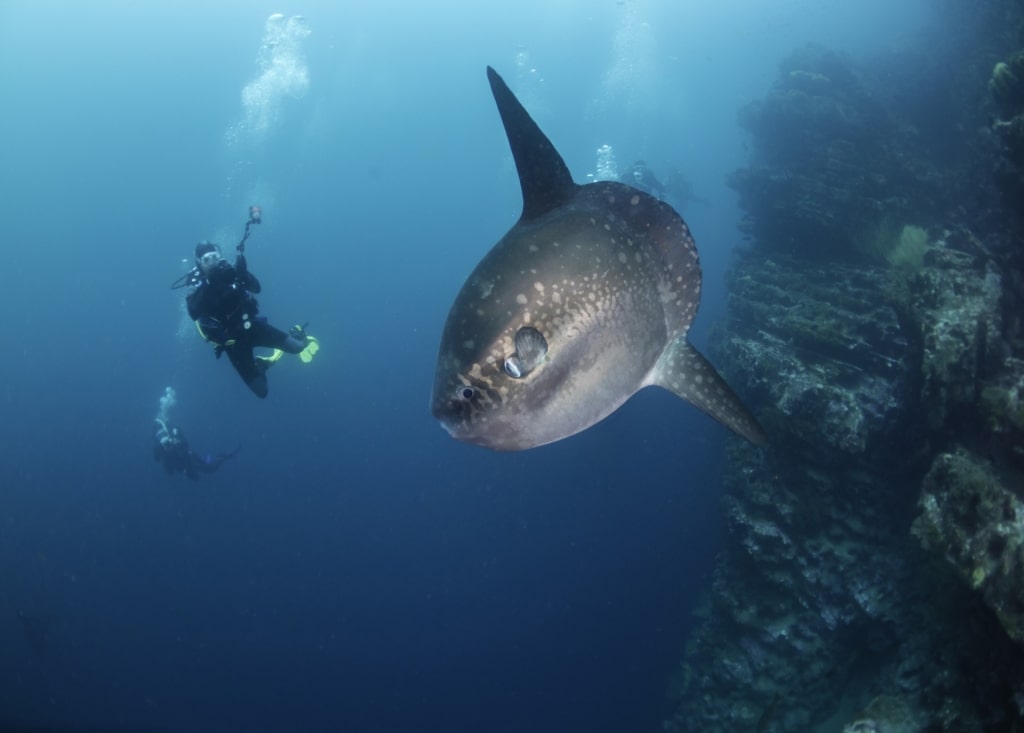
Ocean sunfish
Don’t be alarmed if you come across an enormous fish, maybe as long as six feet and weighing in at an astonishing 2,000 pounds. This is the ocean sunfish, or mola mola, and Punta Vicente Roca is the best place in the Galapagos to spot them.
These curious-looking fish have virtually no tail, sandpaper-like skin, and long fins. They’re completely harmless—they eat jellyfish and crustaceans—and they come to the surface to bask in the sun, turning onto their side to absorb heat.
Encountering one can be quite startling, but among snorkelers, this is a prized sighting and is one of the most unique things to do in the Galapagos.
Tagus Cove, Isabela
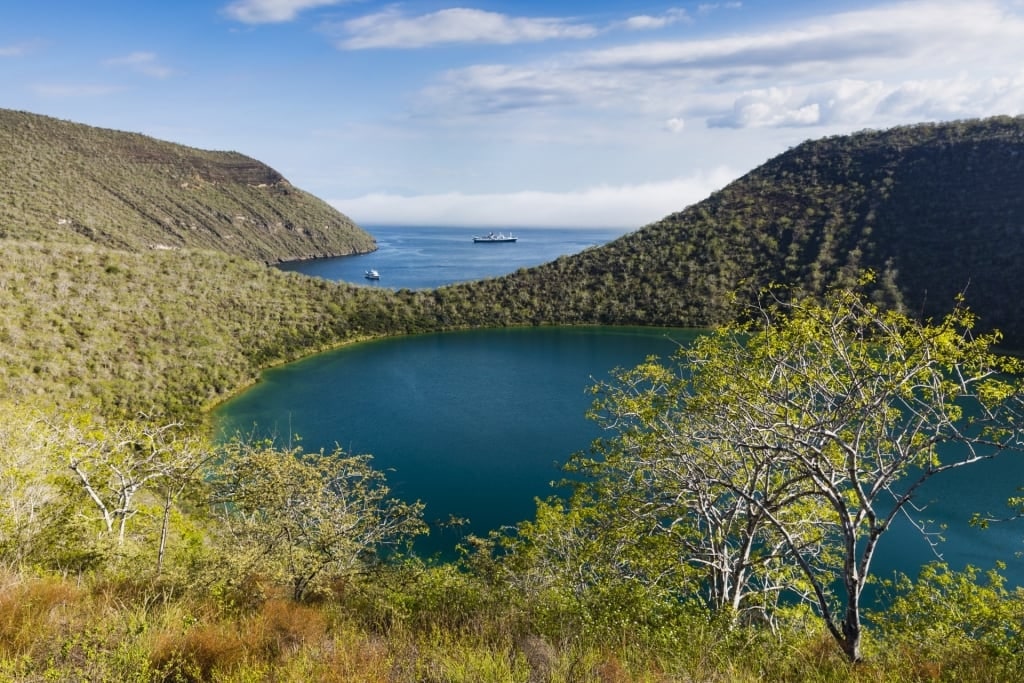
Tagus Cove, Isabela
Tagus Cove, on the northwest coast of Isabela Island, has an interesting local history as well as superb snorkeling. Charles Darwin came here in 1835, and this protected cove was also a refuge for pirates and whaling ships.
Marine life is abundant here, and you should spot blue-footed boobies and flightless cormorants. The highlight, though, is to get in the water with inquisitive black-and-white Galapagos penguins, some 700 pairs of which nest on Isabela.
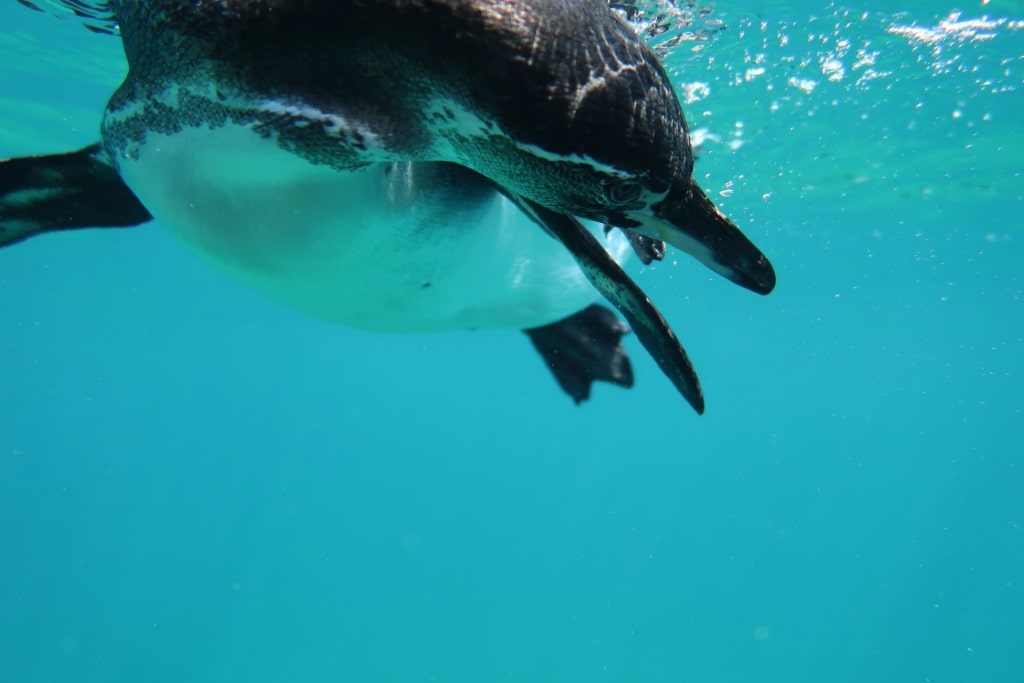
Galapagos penguin
The penguins lay their eggs in the lava, a safe distance from the water’s edge. You’ll see them standing and waddling on the rocks—but underwater, they’ll speed around you like bullets.
You could surface after a quick dive down and find yourself surrounded by bobbing birds, completely oblivious to your presence. For many, this is one of the most rewarding aspects of Galapagos Islands snorkeling.
There’s also a good chance of seeing sea turtles, sea lions, and eagle rays at Tagus Cove. You can identify the latter by their almost polka dot markings.
Kicker Rock, San Cristobal
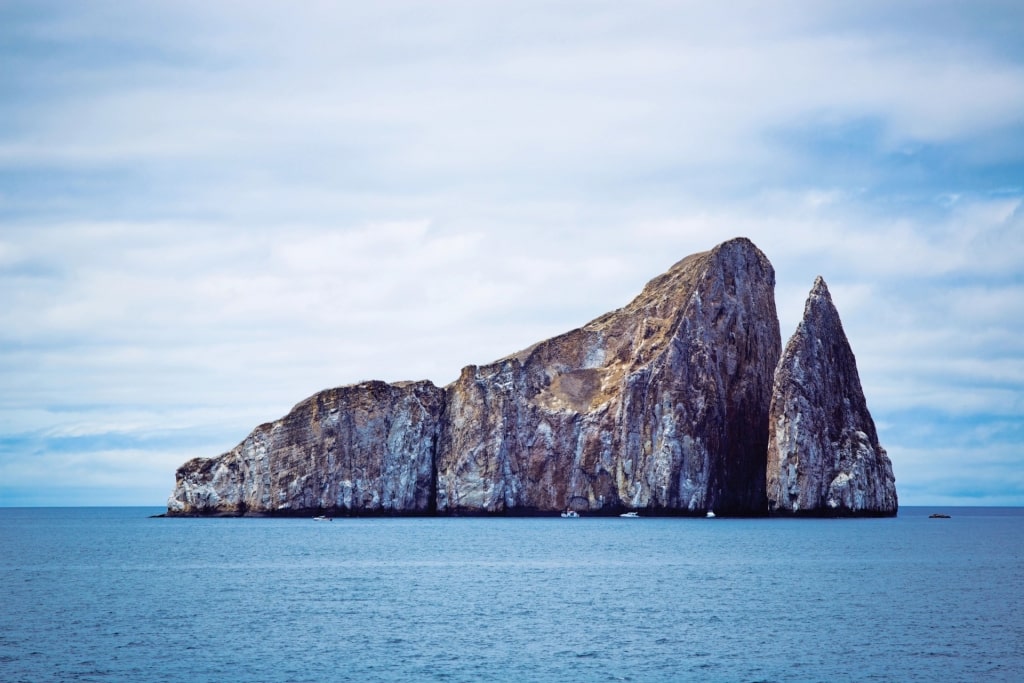
Kicker Rock, San Cristobal
Kicker Rock, or León Dormido (“sleeping lion”) is one of the most iconic images of the Galapagos. It’s a vertical tuff cone rising out of the water off the coast of San Cristobal, with a chunk broken off at one end eroded into a dramatic, sheer-sided spike.
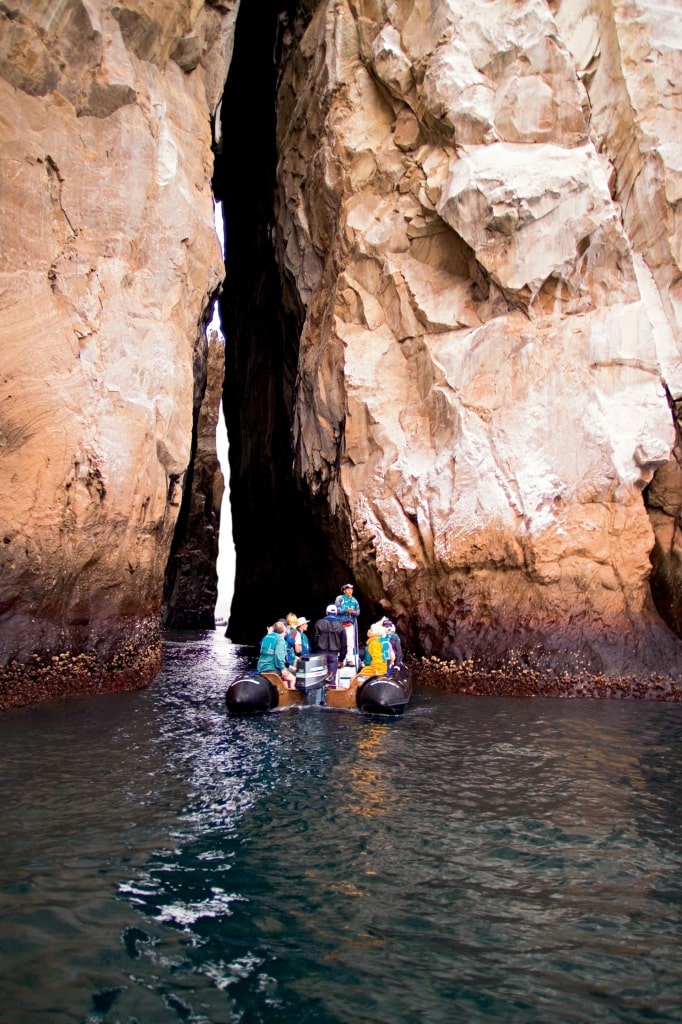
Shark Alley, San Cristobal
Boats can squeeze through the “Shark Alley”, the channel between the rocks, with excellent viewing of the creatures that inhabit the lava shoreline, from blue-footed and Nazca boobies to frigatebirds and colonies of basking sea lions.
Don’t panic about the name; the ecosystem in the Galapagos is well balanced and you won’t encounter aggressive sharks looking for a snack.
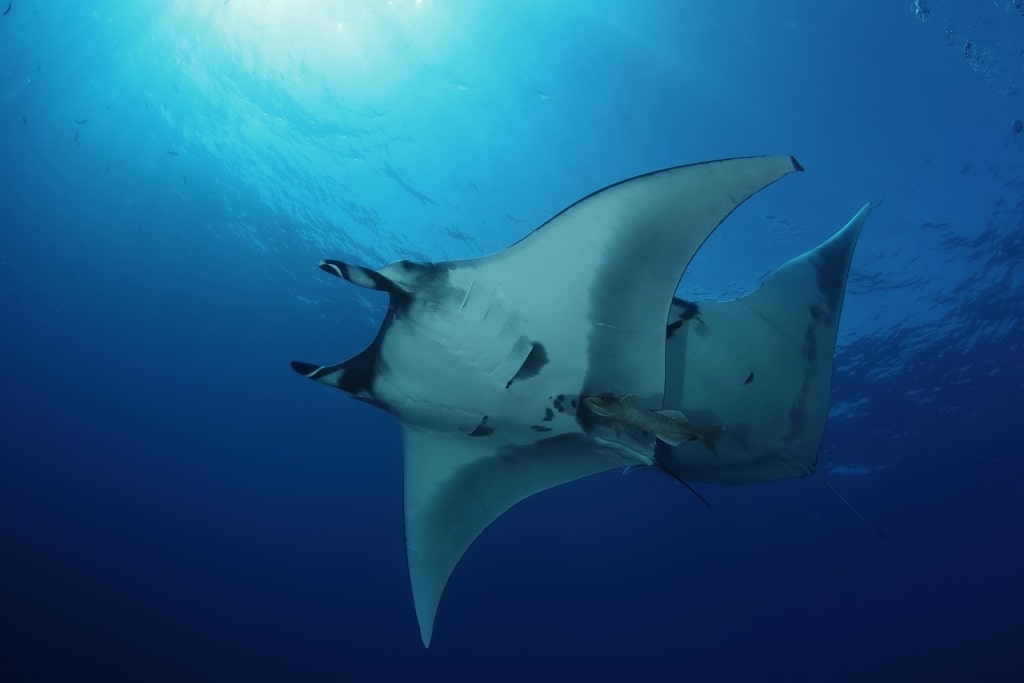
Manta rays
You’ll snorkel from a boat here—what’s known locally as a “deep snorkel”, which means you need to be a fairly confident swimmer.
Your reward should be sightings of some of the bigger marine creatures that inhabit the islands, from sea turtles to giant manta rays, often with a wingspan of 12 feet.
Spotting these is a thrill to even the most experienced snorkeler or diver. You’ll also see brilliantly colored angelfish close to the corals, as well as groupers.
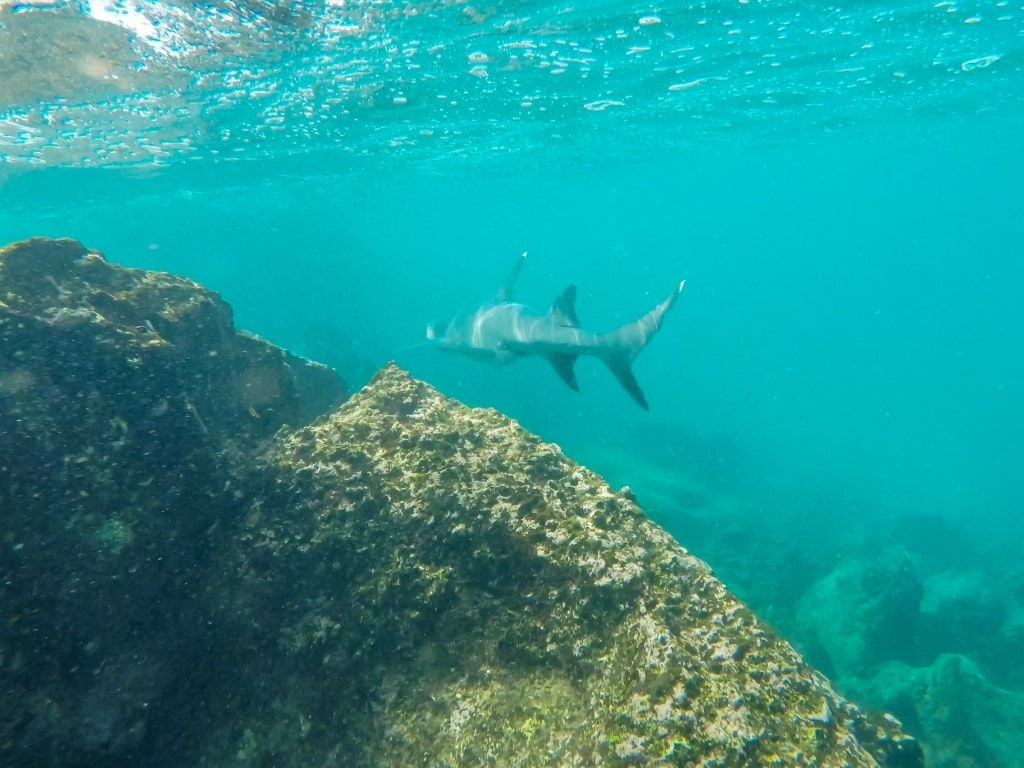
White-tipped reef shark
As for the sharks, snorkel guides are unlikely to take you to a spot where there are sharks en masse, although big gatherings of hammerheads are common around Kicker Rock, further from the shore.
What you will most likely see are lone black-tipped or white-tipped reef sharks cruising along the sea bed. Spotting your first shark can send a burst of adrenaline through you—but the sharks in the Galapagos are minding their own business. =
Isla Lobos, San Cristobal
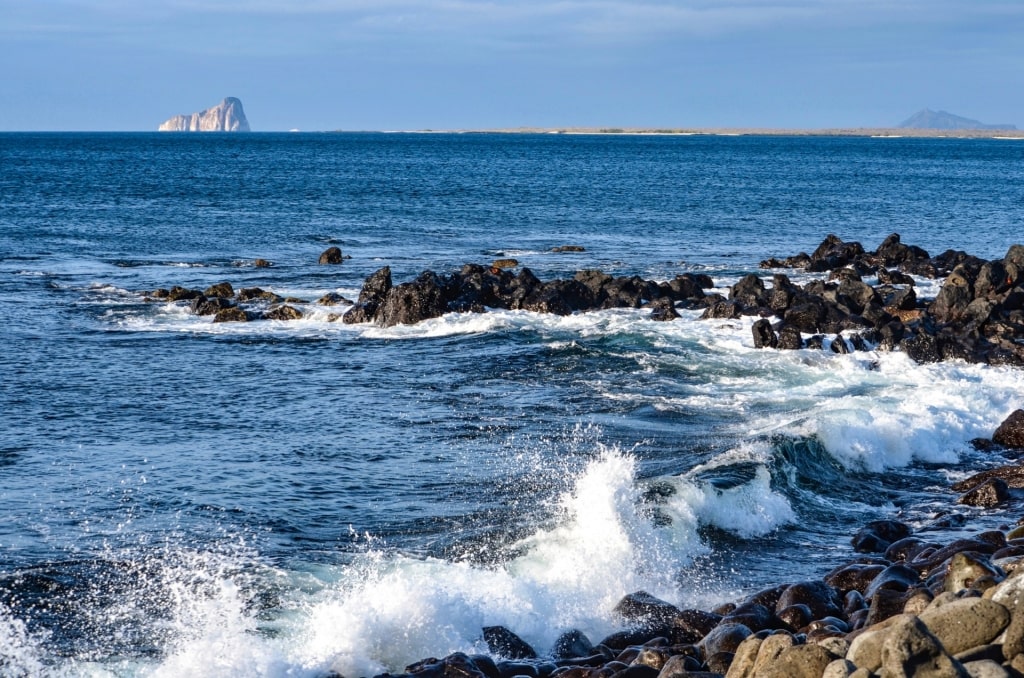
Isla Lobos, San Cristobal
Isla Lobos, a small, flat, sandy island, is separated from larger San Cristobal by a channel. There are vast numbers of sea lions here; in season, moms and big-eyed pups loll on the sand in large harems, often guarded by an alpha male who will patrol the beach, barking and fending off potential competitors.
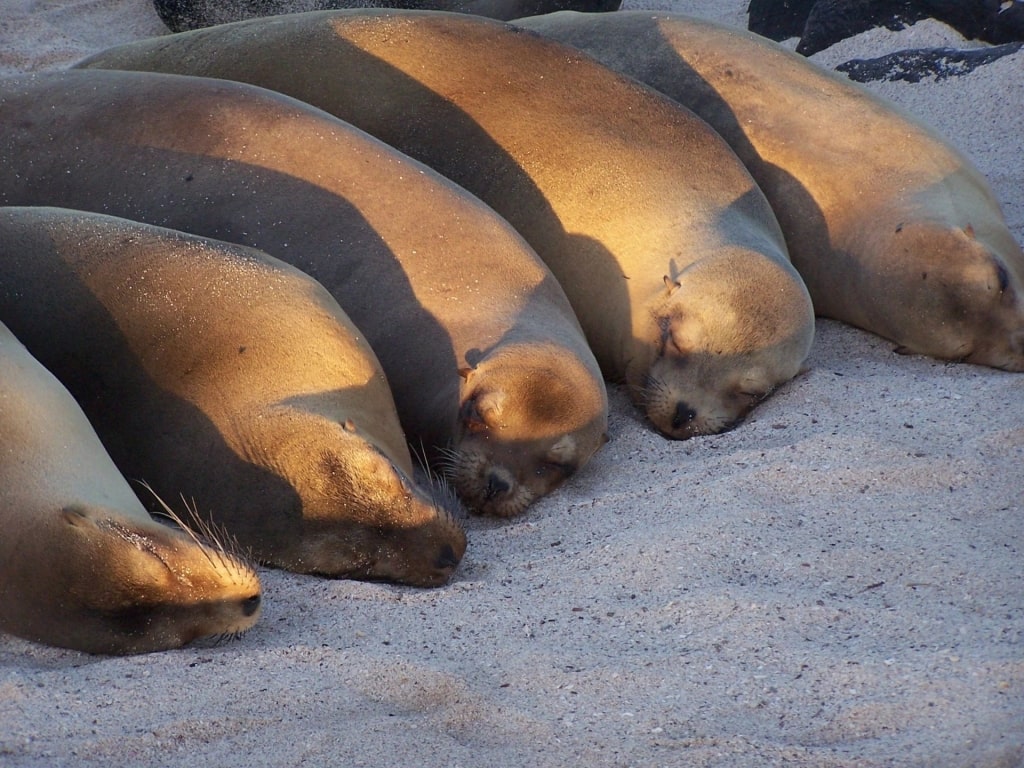
Sea lions
The water is calm here, and you can enter from the beach. If juvenile sea lions jump in with you, remember that however cute they look, these are wild animals. They will dart around you, teasing you, and may take playful nips (a lightweight wetsuit is a good idea here).
If you’re at all nervous, don’t go too far out of your depth—and don’t panic! Most people find this a deeply profound experience, interacting with a wild Galapagos animal in its own environment.
Remember to take an underwater camera to capture the moment, but hang onto it—sea lion pups can be mischievous.
North Seymour Island
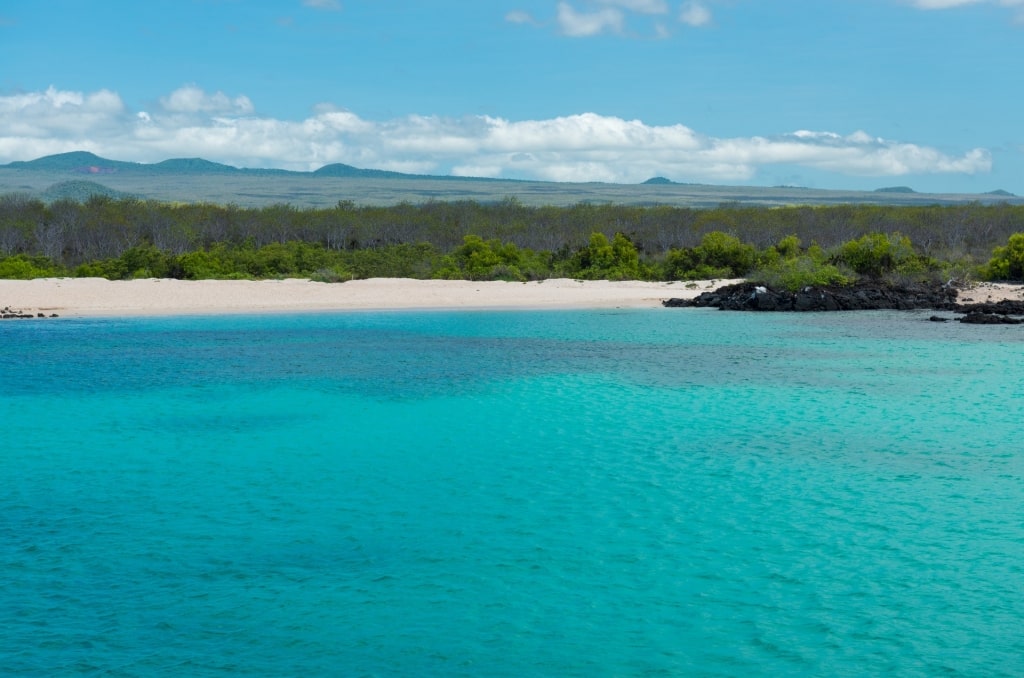
North Seymour Island
A vast colony of frigatebirds inhabits tiny, arid North Seymour. You’ll also find abundant land and marine iguanas here, as well as snoozing sea lions scattered across the pebbly beaches.
The underwater life of North Seymour is dazzling, and you should find yourself completely surrounded by vast schools of brightly colored fish; it’s like swimming in an aquarium. Look out for rays darting across the sea bed, and sea turtles so close you could almost touch them.
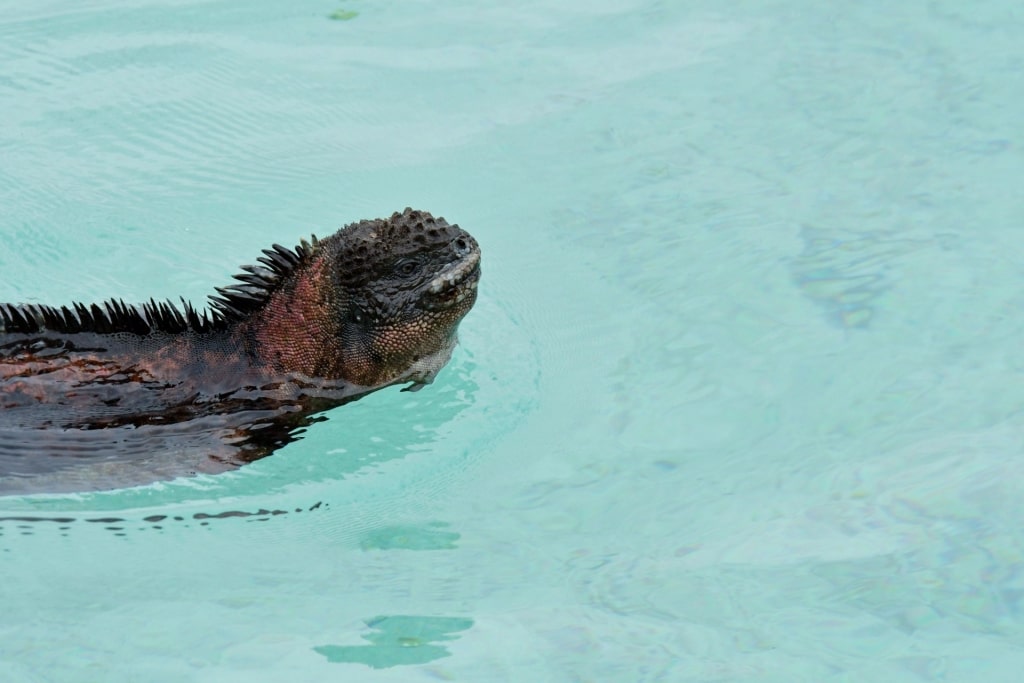
Marine iguana
When you’re swimming close to the shore, you should spot marine iguanas under the water. While these prehistoric-looking beasts appear to spend most of their time perched like statues on the rocks, they are in fact excellent swimmers and can stay underwater for up to an hour.
You’ll see them streamlining their bodies and using their tail as a rudder as they dive down to feed on seaweed.
Pinnacle Rock, Bartolomé

Pinnacle Rock, Bartolomé
The spike of Pinnacle Rock is a classic Galapagos image, with two arcs of golden sand fringing the isthmus off which the rock lies.
This is a great snorkeling site for less experienced swimmers as you can swim off the north beach, with schools of colorful fish just a few feet from the shore.

Sally Lightfoot crab
Look out for green sea turtles, which nest here, and the bright scarlet and orange Sally Lightfoot crabs. You may even spot white-tipped sharks in the deeper water.
After your snorkel trip, stroll along the southern beach, where swimming isn’t permitted, and look in the shallows for spotted eagle rays and stingrays.
Darwin Bay and Prince Philip’s Steps, Genovesa
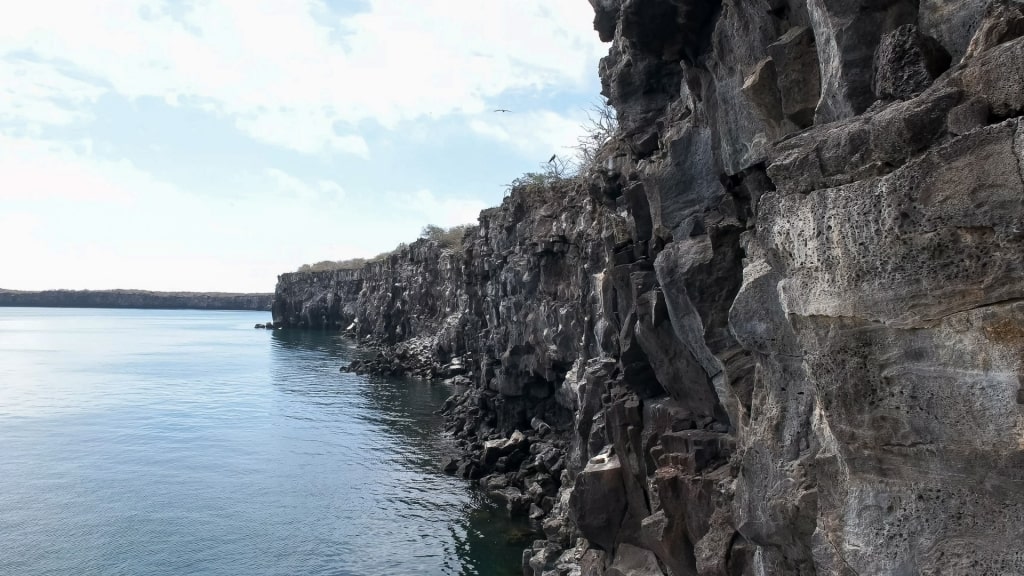
Prince Philip’s Steps
The southern side of Genovesa is actually a semi-submerged volcanic crater. The southernmost point of the near-perfect semicircle of Darwin Bay is a rock staircase named after the United Kingdom’s late Prince Philip, who visited the Galapagos twice.
Here, you’ll find thousands of seabirds nesting on the rocks, including all three types of booby: blue-footed, red-footed, and Nazca.
To many visitors, the highlight of visiting Genovesa is clambering up these steep steps and marveling at the extraordinary birdlife and the views beyond.
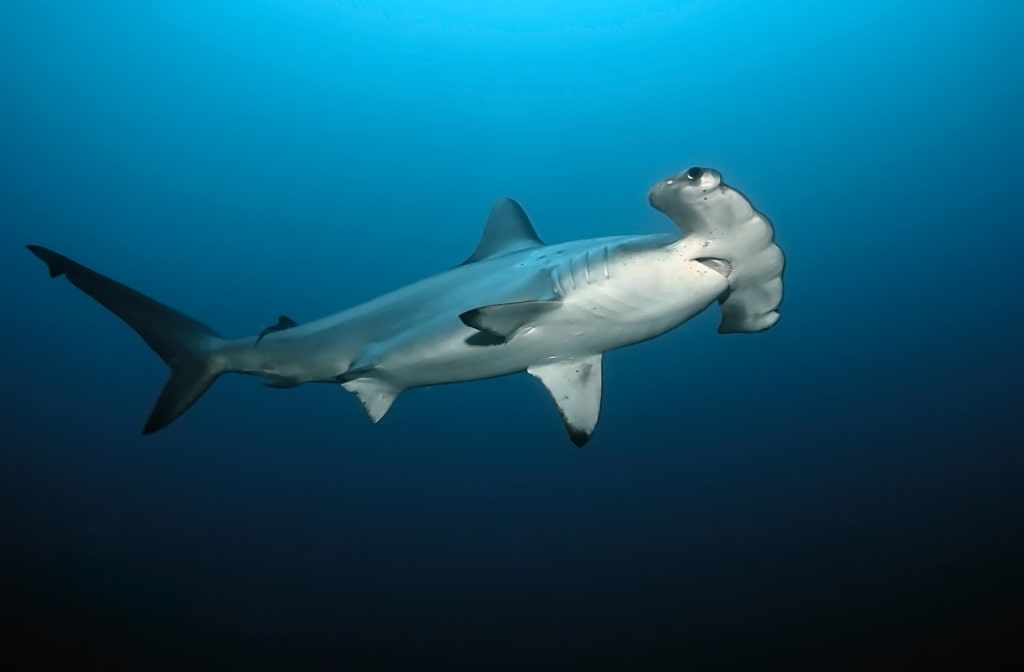
Hammerhead shark
But for fans of the marine world, there are rich pickings in the sheltered curve of the bay, which offers some of the most thrilling Galapagos Islands snorkeling opportunities.
Explore the cool, deep water at the base of the cliffs and you stand a good chance of seeing graceful manta rays. If you’re lucky—depending on how you look at it— you could also see hammerhead sharks.
Punta Espinosa, Fernandina
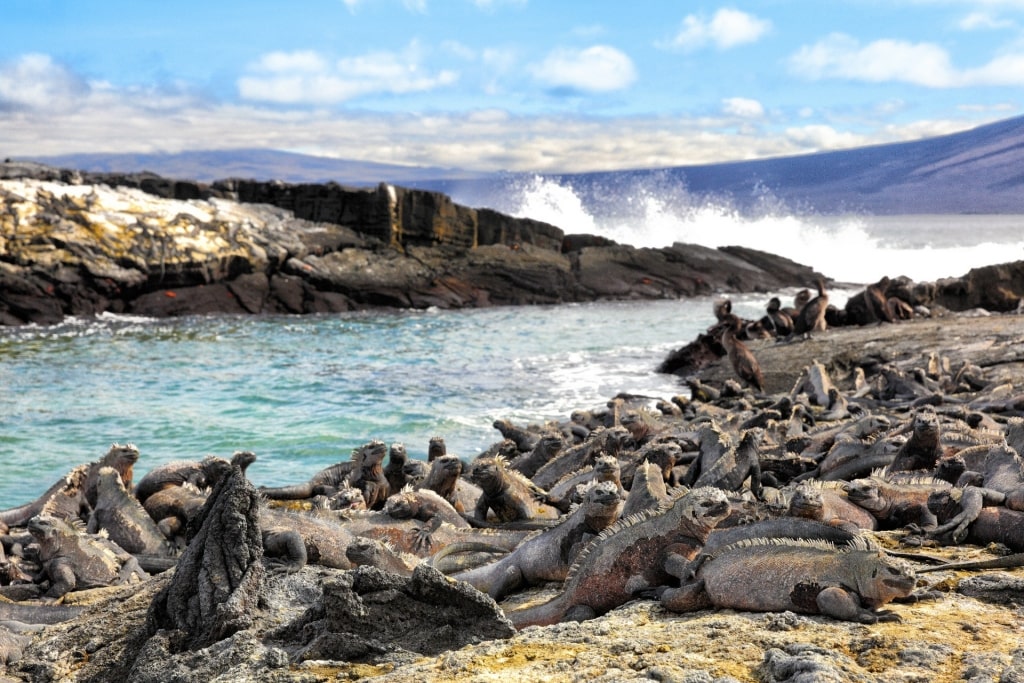
Punta Espinosa, Fernandina
The “youngest” area of the Galapagos, all things being relative, Punta Espinosa on Fernandina Island is a stark, black landscape of jagged lava. Underwater, you can snorkel over rocky valleys formed where the current cuts through the volcanic rock.
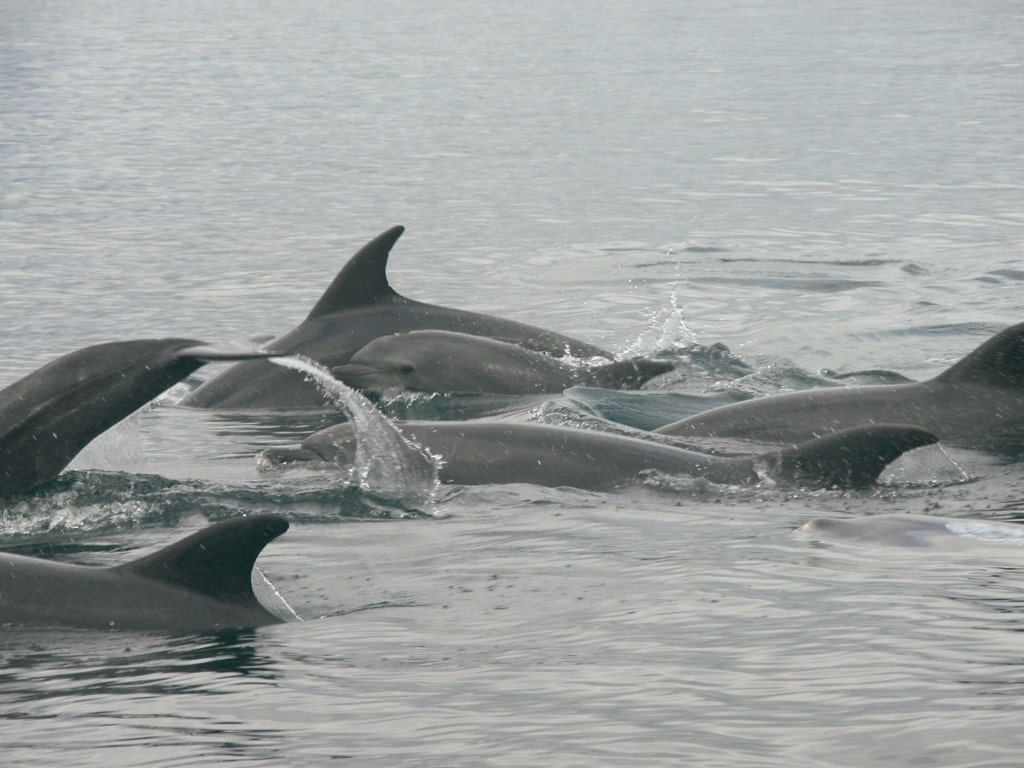
Dolphins
A vast colony of marine iguanas basks on the rocks here, piled up in the sunshine and diving into the water to feed on algae. You could also find yourself swimming among Galapagos penguins in this pristine site, and watching blue-footed boobies diving for food.
Because the water here is nutrient-rich, there’s also a fair amount of dolphin activity, so keep watching out for pods of bottle-nosed dolphins.
Devil’s Crown, Floreana
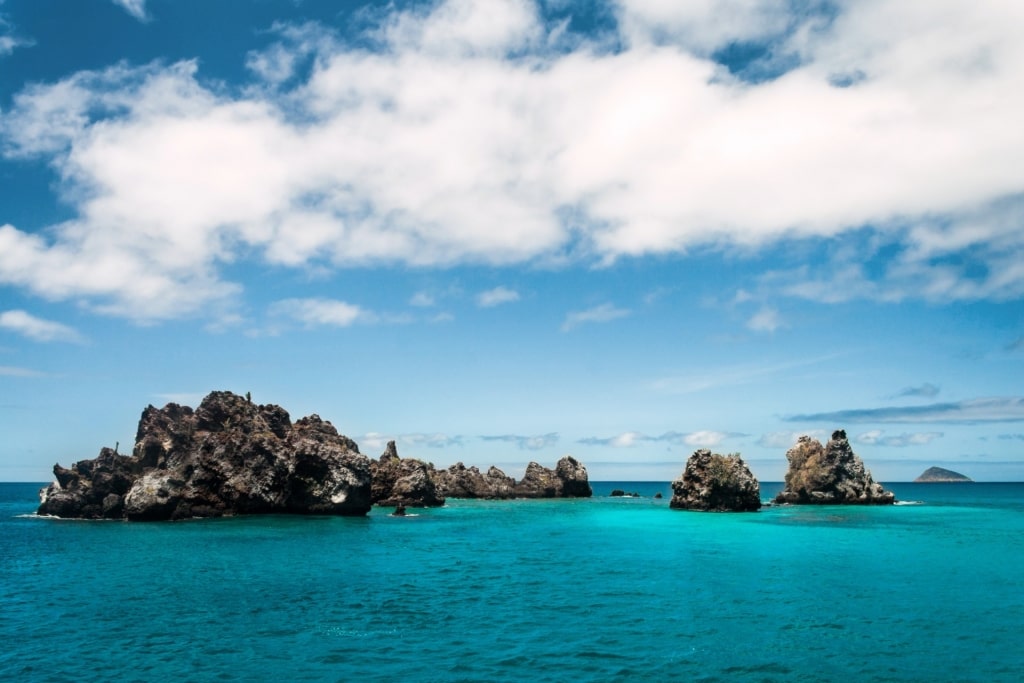
Devil’s Crown, Floreana
The menacing-sounding Devil’s Crown is a circle of spiky, pointed rocks off Floreana Island. The rocks are actually the remnants of a volcanic crater.
Despite its unwelcoming name, this is regarded as one of the best places for snorkeling in the Galapagos, as the rocks offer natural protection to dozens of species of small fish.
Look out for shimmering turquoise parrotfish, stately king angelfish, which can grow to more than a foot long, and surgeonfish sporting bright colors of yellow and white. Bright sea stars cling to the rocks beneath you.
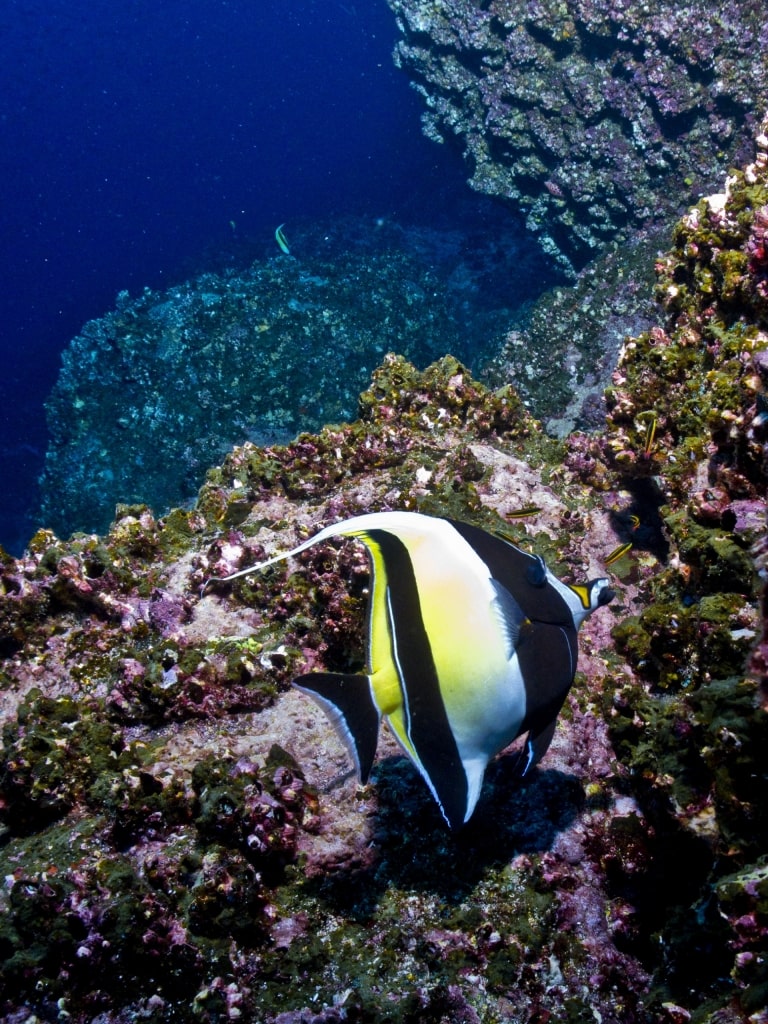
Moorish idol
You may also spot Moorish idol, an elegant fish with vertical black and yellow stripes and a long dorsal spine. If you’re keeping a record of what you’ve seen, Devil’s Crown is the best place to check this one off.
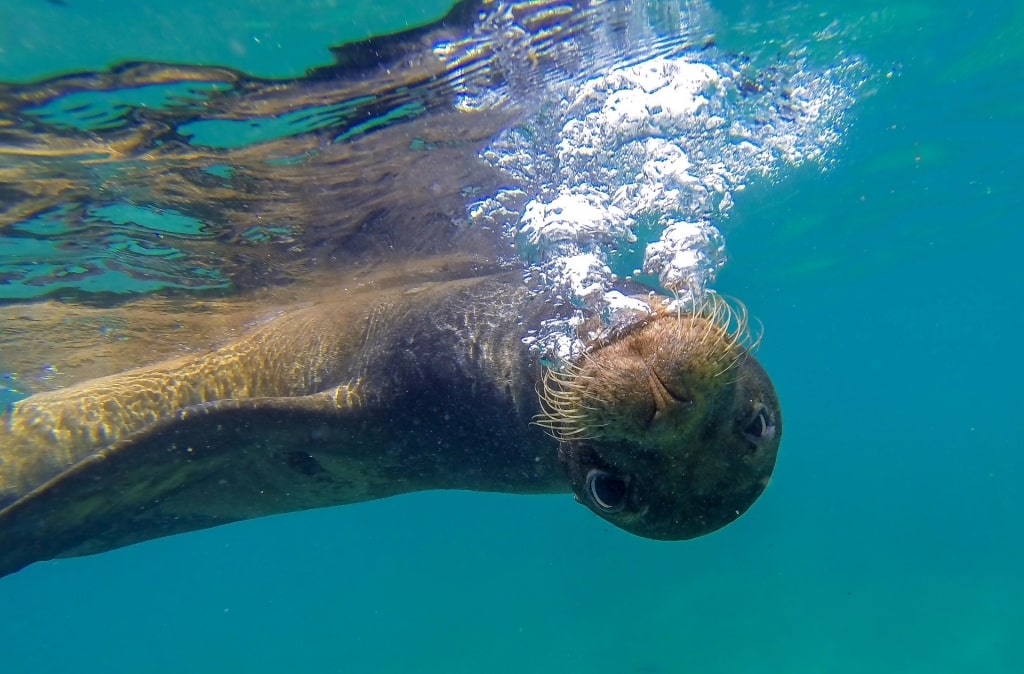
Sea lion
Outside the protection of the rocks, the water is deeper and you could see manta rays and sharks. There are a lot of sea lions here, too, and they may jump in the water to check you out.
Only swim here with a local guide and the protection of a snorkel boat, as the currents can be strong.
Buccaneer Cove, Santiago
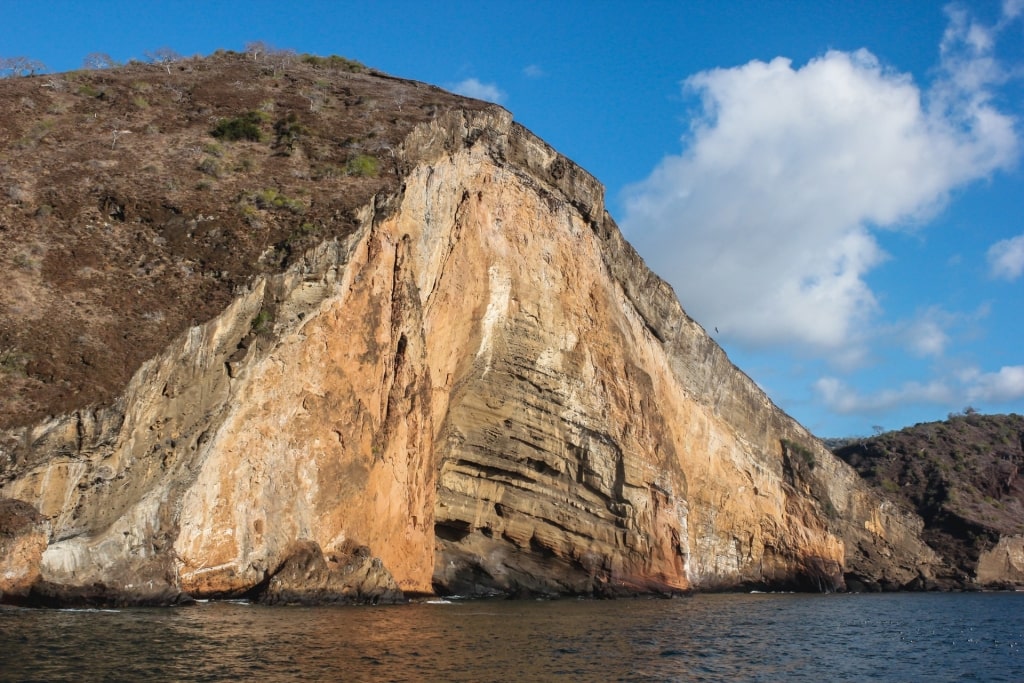
Buccaneer Cove, Santiago
Buccaneer Cove, on the west coast of Santiago, takes its name from the pirates and whalers who would shelter here, stocking up on food—tragically, the giant tortoises that used to roam here—for their long sea passages ahead.
The cove is a peaceful place now, protected like the rest of the islands and backed by steep cliffs.
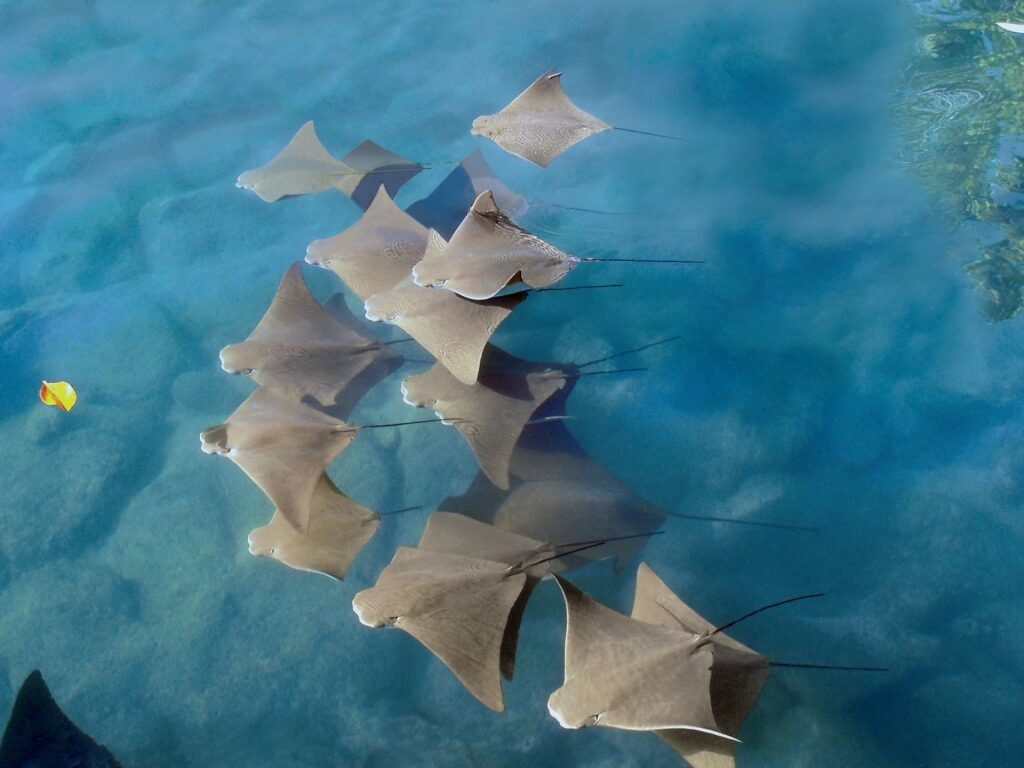
Stingrays
You’ll snorkel straight off the boat here in clear water, and possibly in the company of sea lions, fur seals, stingrays, and turtles.
Non-snorkelers who choose to stay in the panga will find an impressive array of sea birds to spot among the rock formations, from pelicans and herons to oystercatchers and finches.
Gardner Bay, Española

Gardner Bay, Española
The long, white stretch of sand that sweeps across Gardner Bay makes this one of the best spots in the islands for novice snorkelers, as you can swim straight from the beach and come back to your sunbathing spot to rest between forays into the water.
Sea lions bask on the powdery white sand beach, occasionally hauling themselves into the water. On your snorkel trip, you should see sea turtles, shoals of pretty reef fish, and marine iguanas.
Just off the Galapagos beach, there’s a small rocky tuff outcrop, where you’ll see scarlet and orange Sally Lightfoot crabs and smaller fish species close to the rocks, just beneath the surface.
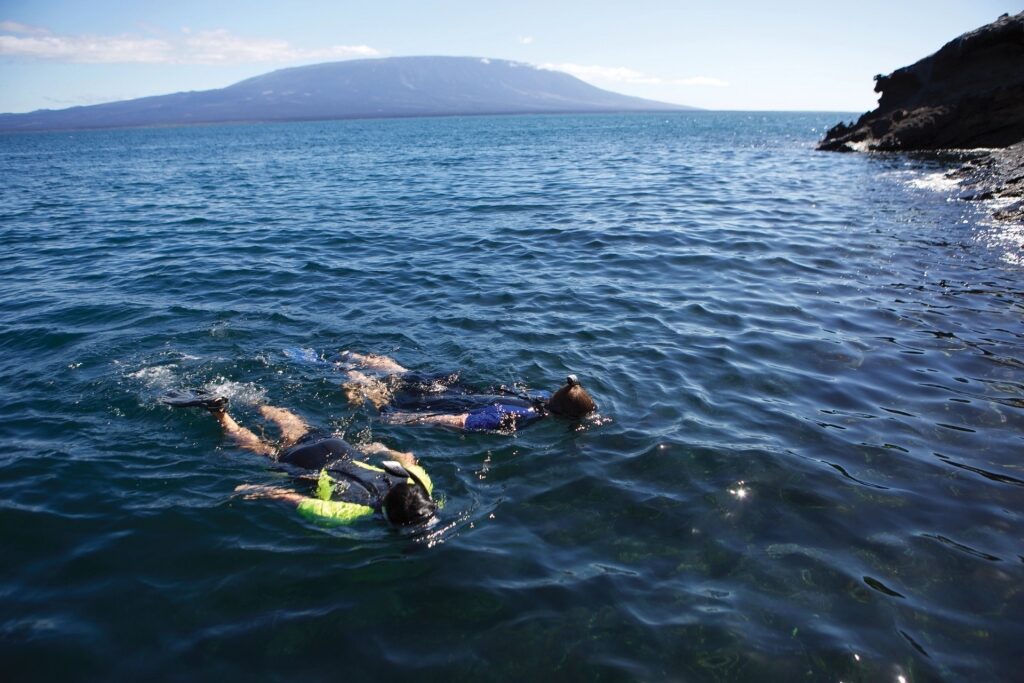
Galapagos
Inspired to explore this natural paradise and get to know its extraordinary marine life? Browse our cruises to the Galapagos and plan the voyage of a lifetime.
